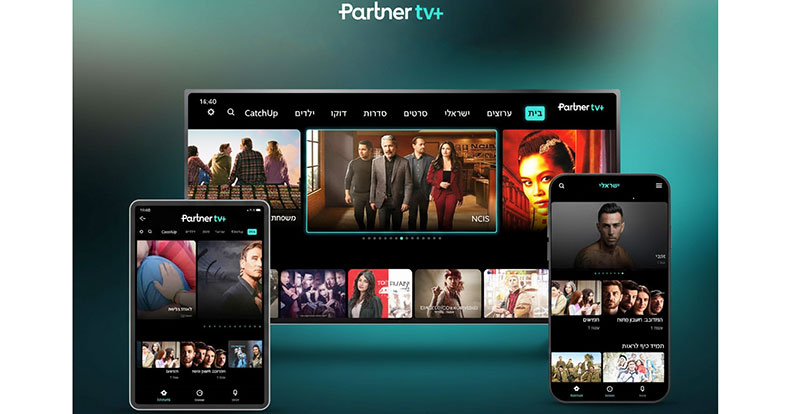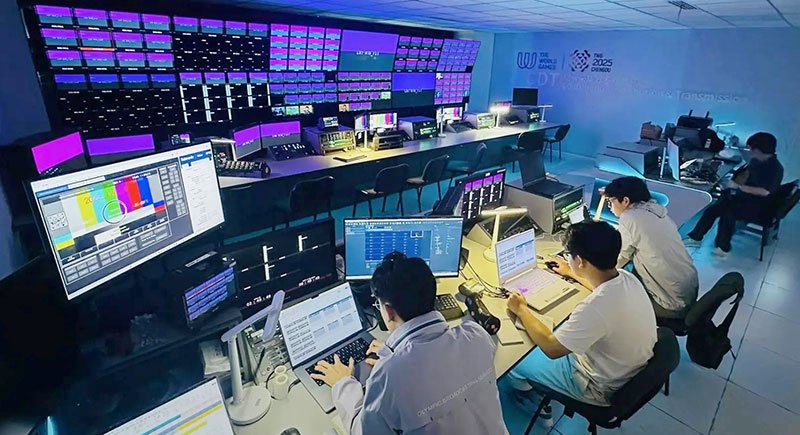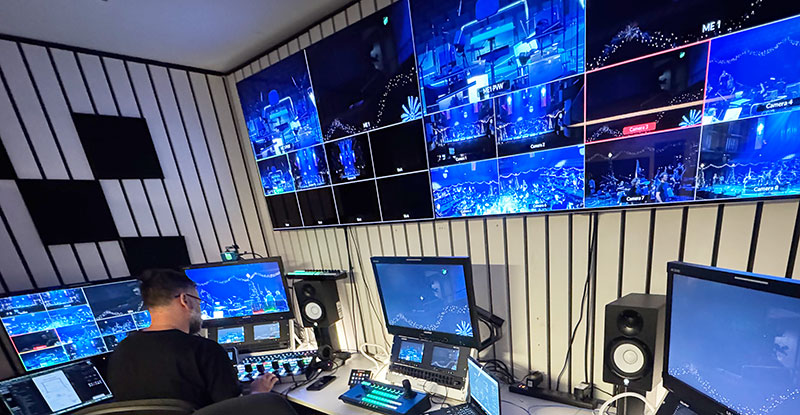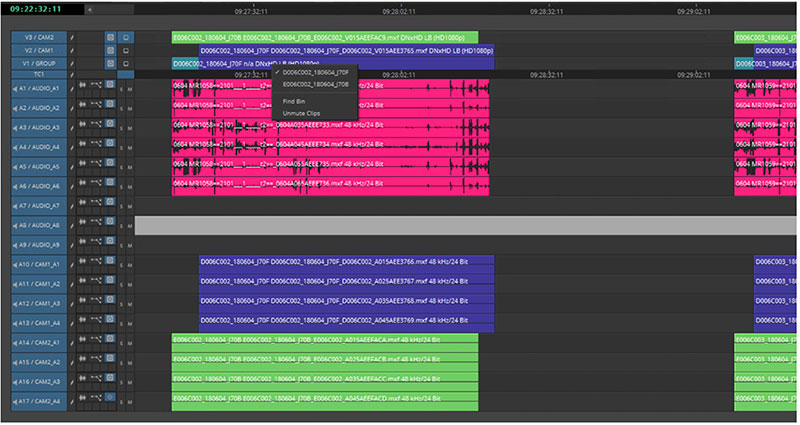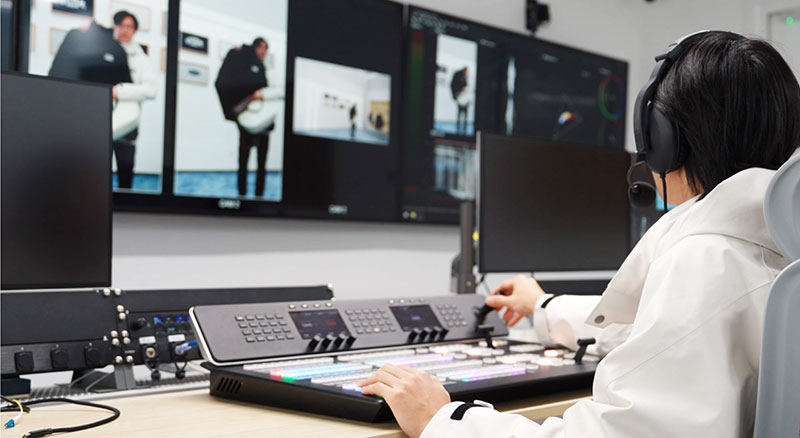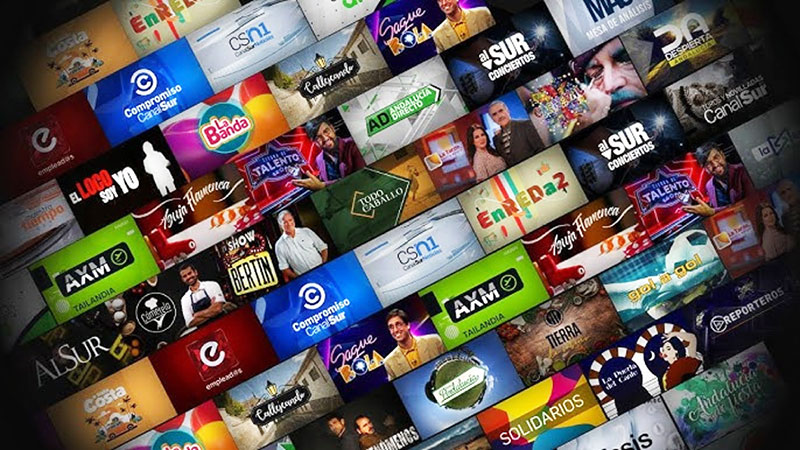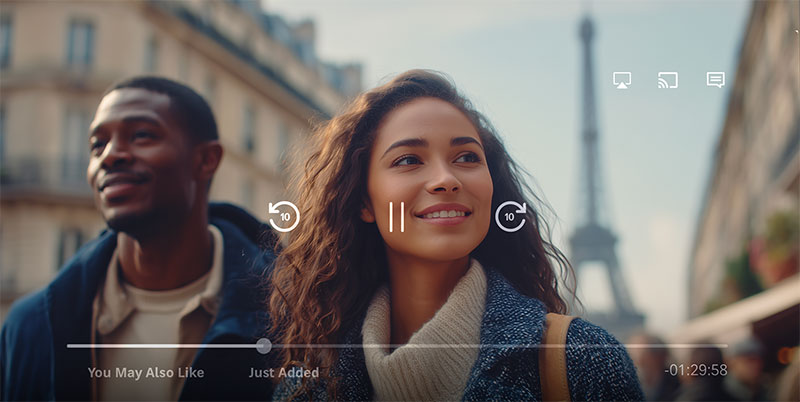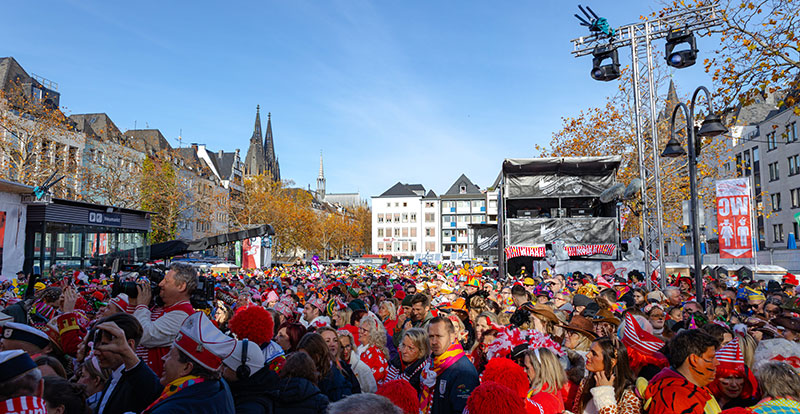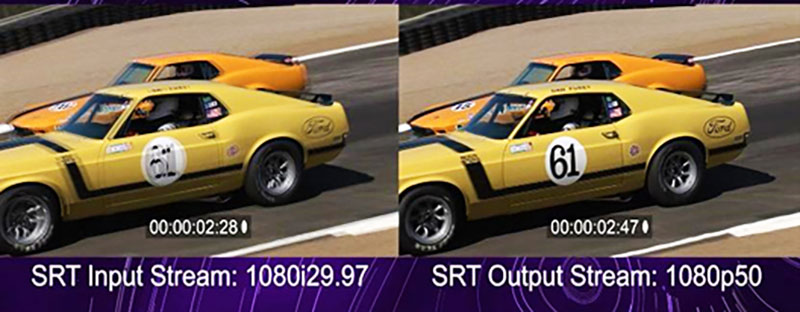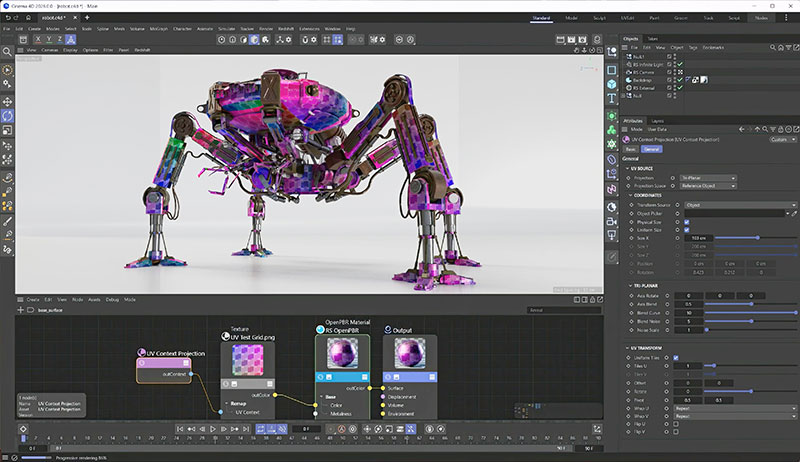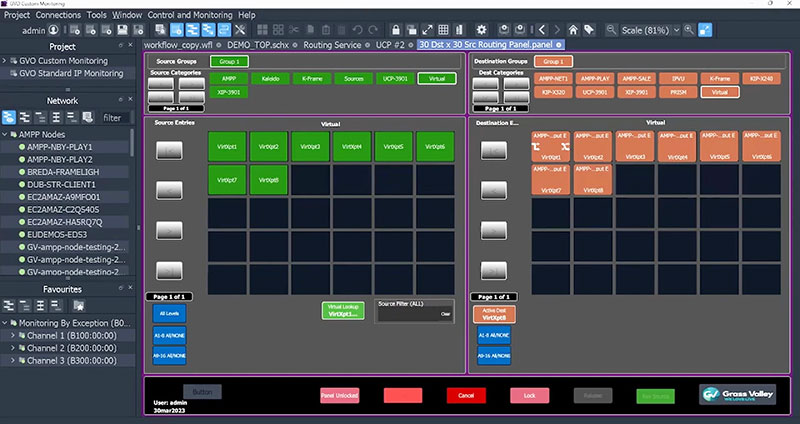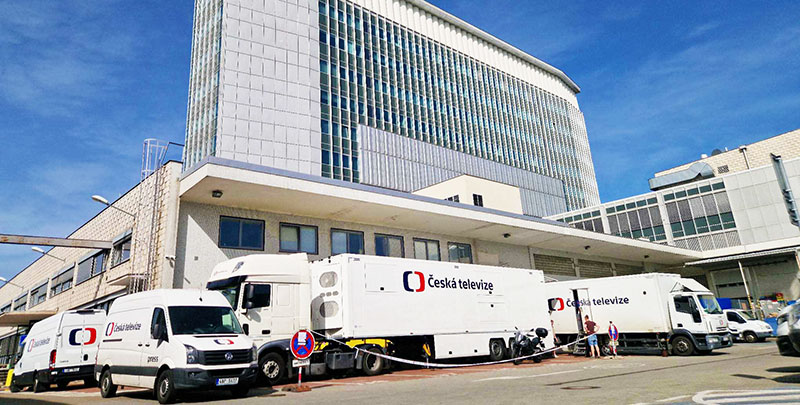Vizrt, BBC Sport and Lightwell collaborated on virtual set design for the Women's Euros combining editorial with an XR graphics environment created with Viz Engine and Unreal Engine.
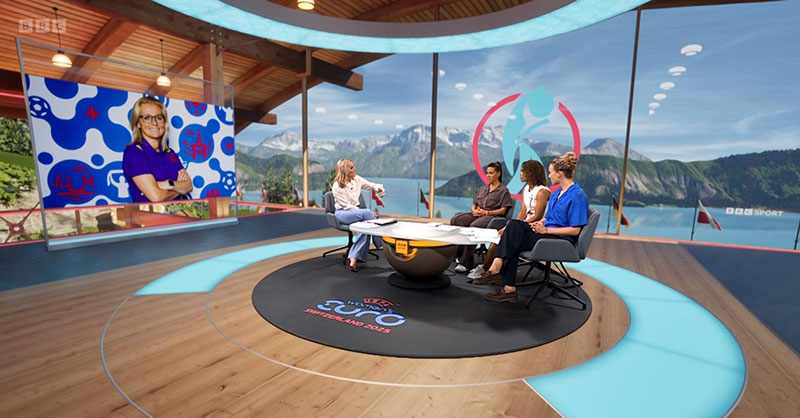
For the Women's Euros 2025, BBC Sport delivered a broadcast that attracted a reported 12.2 million peak audience for the England Lioness’ win over Spain, pushing it up among the most watched television events of 2025 across all broadcasts. For the entire tournament, the BBC reported a total TV reach figure of 22.1m unique viewers, while total viewing hours increased from 173m in 2022 to 186m this year.
The content was produced and delivered from Basel, Switzerland, in partnership with Vizrt and creative studio Lightwell, whose work aimed to reflect the momentum and maturity of women's sport and raise the production standard to match its growing audience. According to the Women's Sport Trust, one in four global sports fans now watches women's sports regularly.
Visualising the Women’s Euros for Fans
BBC Sport’s goal was to meet that rising demand by designing a virtual studio environment for the Women's Euros. This environment combined editorial storytelling with a flexible backdrop featuring graphic and XR elements, built using Vizrt's live graphics and real-time rendering tools in partnership with Lightwell virtual sets specialist.
Designed to align with the location of the tournament in Switzerland, the virtual set placed presenters in a mountaintop pavilion overlooking Lake Lucerne. Behind them were sweeping alpine views, national flags and a soft sky whose appearance shifted to show the time of day. Becoming more than a backdrop, the XR studio helped link the coverage closely to the Swiss location, while giving producers the flexibility of an entirely virtual environment.
"This wasn't about adding technology for the sake of it," said John Murphy, Design Director at BBC Sport, "It was about using the tools we already have available to us to tell the story of the tournament in a way that was current, and identify where the tournament was being played. Knowing that more fans than ever would be tuning in, we aimed to deliver the best possible coverage."
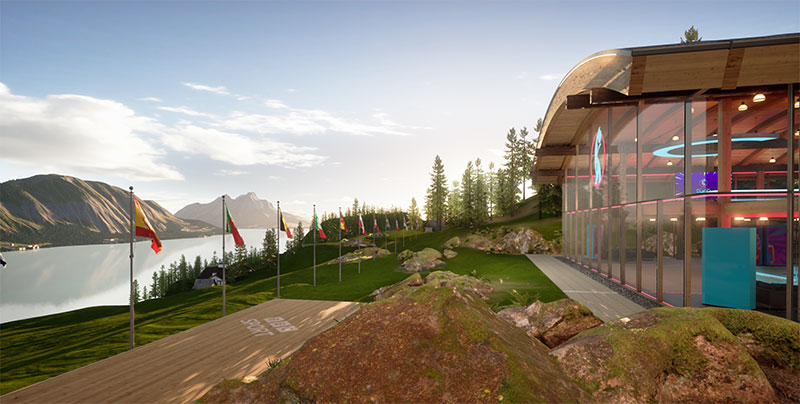
The project ran on Vizrt's Viz Engine for compositing and live rendering in combination with Unreal Engine, enabling BBC Sport to blend live graphics with virtual design in real-time. This setup helped the production team deliver a coherent environment, ready for broadcast, that matched the pace and polish of the live sport, meanwhile allowing creative teams to adjust visuals and narratives as the tournament unfolded.
Realistic Shadows and Reflections
Presenters were placed naturally within the set using Vizrt's Reality Connect, a tool added to Viz Engine 5.1 in response to updates in Unreal Engine 5, enabling the two applications to work together more effectively. Its AI algorithms help composite talent with a hyper-real result, producing accurate shadows and reflections within the virtual studios and XR sets and overcoming the look of disconnected people that sometimes appear to float.
Reality Connect anchors the talent within the virtual studio by using 3D models of the individuals that are continuously updated in the software, in line with the live action. It uses Vizrt’s AI pose estimation, which operates on the same GPU and works with the same live video feed used for keying. This approach means the shadows and reflections always refer to the actual performance.
It also saves on cost, because Reality Connect does not need separate hardware. Whether using Viz Engine’s native render pipeline or Unreal’s render blade, the resulting set-up takes advantage of the sensitivity that both new renderers have to screen resolutions, particularly when working with complex video wall configurations, such as curved surfaces and floors. The combined output resolution of Vizrt’s new Virtual Window effect, video walls, ceilings and floors can be up to four times UHD. Very large set-ups can be managed by a single Viz Engine.
Accurate Previews
Another interesting advantage here is Vizrt’s work with ROE Visual to combine Viz Engine 5 and Megapixel GhostFrame to produce a preview experience that is more comfortable and natural for talent.
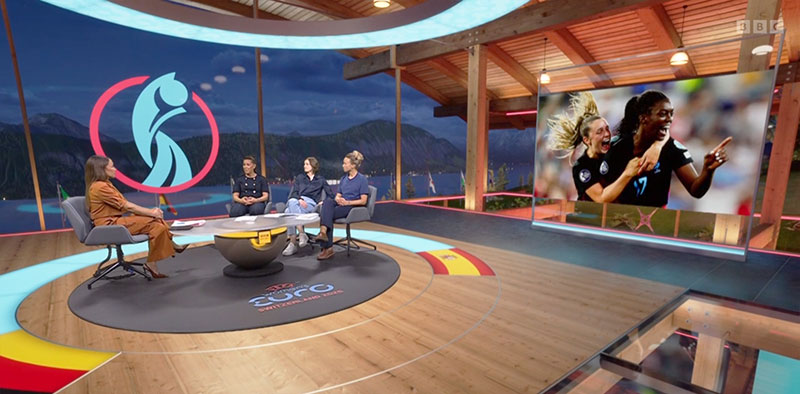
GhostFrame feeds up to four content streams into an LED screen, which the camera can capture separately. Users select which feeds are visible for the presenter and production crew, and which will become the live broadcast feed. The talent can genuinely interact with an AR object, for example, without risking virtual collisions, or look directly at the video wall for markers, teleprompting cues or when conducting a remote interview. None of these are visible in the live broadcast feed.
Creative direction was led by Lightwell who, along with Creative Director Toby Kalitowski, worked with BBC Sport to design a set that aligned with the tone and identity of the tournament. Every element, from the flags of participating nations to the positioning of the camera moves, was designed to support the storytelling and share with the audience what made this major international event distinctive.
"We wanted the virtual space to feel integrated with editorial," said Jim Mann, Creative Director at Lightwell. "Not just somewhere for presenters to stand, but a space that helped tell the story of the location and the tournament. It was about giving BBC Sport a canvas that matched their ambition, and the audience's expectations."
Value of Virtual Production
Through its visual work on the season’s events, the BBC has played a role in the growth of women's sports. BBC Sport built on the same XR infrastructure used during its 2024 Olympics coverage, adapting the virtual studio for the Women's Euros with a new creative treatment. By reusing and evolving the core technology across major events, the team is delivering consistently high production values while maximizing the impact of its technology.
"The smartest use of technology isn't always about what's new – it's about what's next," said Andrew O'Neil, VP Sports, Strategy & Growth at Vizrt. "The ability to adapt a single platform across multiple broadcast events and still achieve a new, creative result each time is where the real value is. It's not just efficient – it means teams can focus on storytelling, not set-up." www.vizrt.com




